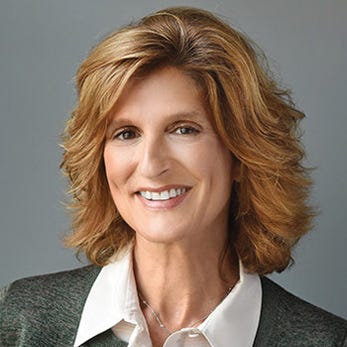Eight Questions for Advisors to Optimize Their Business for GrowthEight Questions for Advisors to Optimize Their Business for Growth
Taking the time to rise above the day-to-day tasks of your “job” to invest time in thoughtful strategizing and planning can be the gamechanger you’ve been looking for.

In 1986, Michael E. Gerber’s legendary “E-Myth” series introduced entrepreneurs to a new way of looking at building and growing a business. That is, he reminded us all that we need to invest our energies working ON the business and not just IN it.
That’s not easy—particularly for financial advisors—because the day-to-day responsibility of serving clients is typically the priority. And, quite honestly, it’s anathema to consider taking time on a task that isn’t immediately revenue generating.
Yet we are witnessing a growing trend that indicates advisors—regardless of whether they practice as employees or independent business owners—are thinking more about their businesses as “businesses.” They’re looking beyond the short-term and taking time to evaluate what goes into growing a sustainable business for the long-term—such as scalability, succession planning, profitability, platform and technology, and whether their firm can support all they want to achieve and then some.
It’s an important mindset to adopt as clients have become more demanding and the industry landscape has evolved to offer a greater array of options than ever before, making it possible for advisors to have more freedom, control and agency over their professional lives.
Yet, regardless of the potential that exists, growth and success are not a given: They are reserved for those who can rise above the daily tasks of their “job” and invest time in thoughtful strategizing and planning.
That is, stepping back to look at the “big picture” of your business—and identifying and solving for any gaps you might see.
It’s a deliberate and strategic process that requires you to take the time to think of your business as a business.
And it’s a critical process for advisors who work at big brokerage firms because the reality is that it’s very easy to simply “go with the flow” that the firm has prescribed. But is that the right direction for your clients, business and future?
Taking that “big picture” perspective
The thought-process that we share with advisors is typically two-fold:
First, focusing on the big picture as it relates to the alignment of your goals with your firm’s ability to help you achieve them.
And second, identifying gaps in planning and resources so that no matter where you choose to practice, your business is running as efficiently and productively as possible.
In this article, we focus on the first part—because it’s critical to start by determining if you are well-positioned to achieve your goals at your current firm.
No doubt, year-end is a great time to take stock of your business life; however this exercise is something we encourage advisors to calendar more regularly. Consider it a quarterly meeting you make with yourself.
Take 30 minutes – fully focused, with email and phone notifications silenced—to ask yourself the following questions:
Am I achieving all I want to?
Is my firm a help or hinderance in achieving my goals?
If I had a magic wand, what changes would I make to my business?
If I could hit the “easy button” to get from “here to there” where would “there” be?
What additional support do I need?
Do I have aspirations of building an enterprise? Put another way, do I want to be a business owner?
What things don’t I know that I wish I did?
How do I want to live my business life?
It means getting quiet and comfortable and allowing the answers to come to you with openness and honesty. Then be prepared to look at the gaps and assess how best to fill them. If there are none, then great! Keep moving forward with a plan to reassess in the next 3-to-6 months.
But if you’re sensing gaps between where you are now and where you want to be, then consider this an opportunity to dig deeper. You can start simply by educating yourself—reading articles as you are now, listening to podcasts, or talking with colleagues and peers. You may also want to kick the tires a bit and take meetings with other firms. Or consider connecting with a consultant or coach who can help you objectively explore your options.
One thing is certain: Working ON the business is an invaluable investment of your time. By taking a step back and looking at the big picture, ideas often emerge that can either make or break what lies ahead—providing you with the opportunity to think calmly and strategically.
Mindy Diamond is CEO of Diamond Consultants in Morristown, N.J., a nationally recognized boutique search and consulting firm in the financial services industry.
About the Author
You May Also Like







